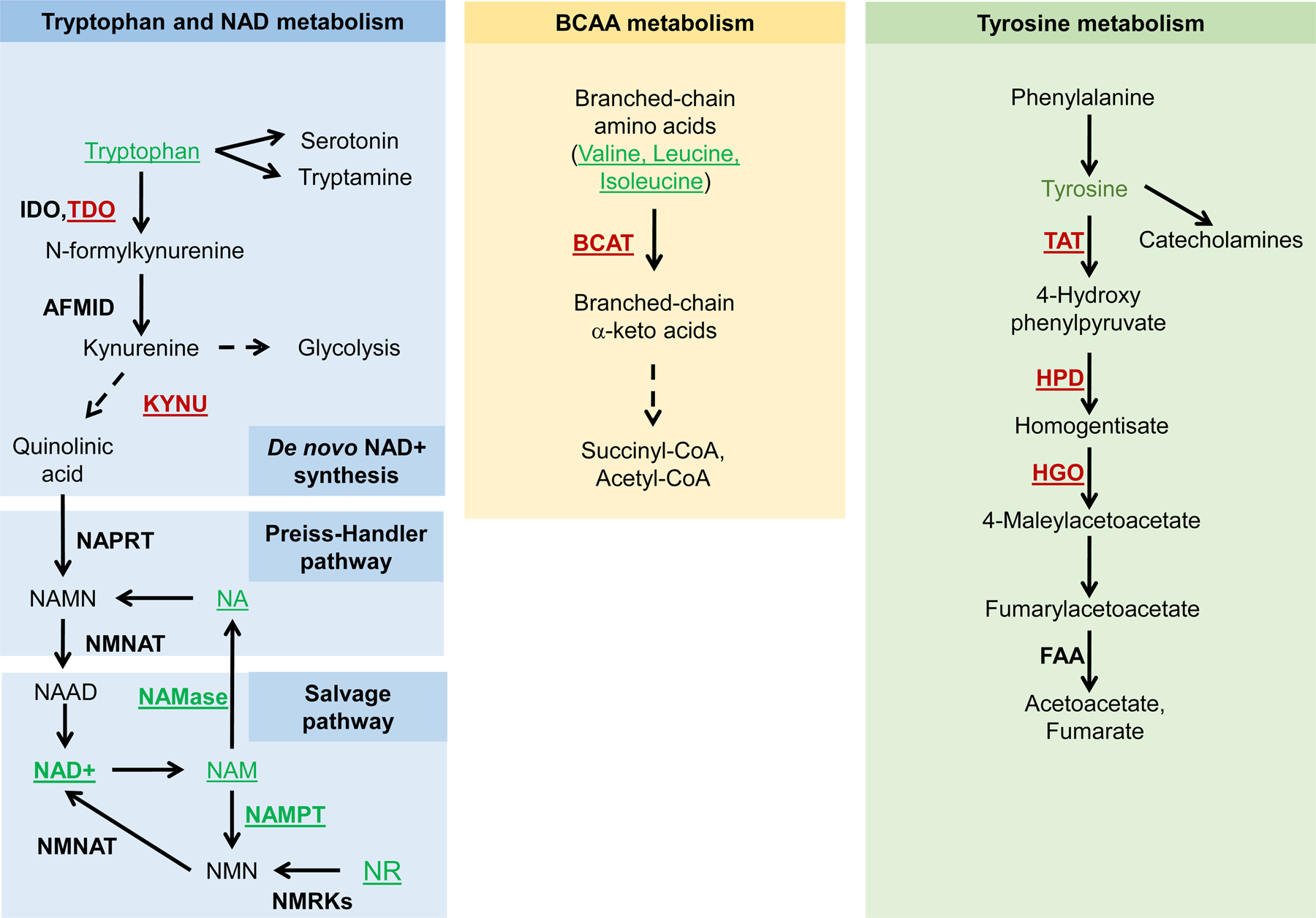Fig. 3.

Schematic representation of tryptophan and NAD metabolism (A), BCAAs metabolism (B), and tyrosine metabolism (C). Underlined are metabolites and enzymes that were associated with lifespan extension. Red font color represents downregulation or depletion from food, while green font color represents overexpression or supplementation. Dashed line represents that multiple steps are involved. (A) Supplementation of tryptophan, as well as downregulation of the enzymes tryptophan 2,3-dioxygenase (TDO) and kynureninase (KYNU) was associated with lifespan increase. The Preiss-Handler and salvage pathways can synthesize NAD + from pyridine bases. Increased levels of nicotinic acid (NA), nicotinamide (NAM), nicotinamide riboside (NR) and NAD+, as well as expression of nicotinamidase (NAMase) and nicotinamide phosphoribosyltransferase (NAMPT) were associated with lifespan extension. (B) Branched-chain amino acids (BCAAs) are degraded through a series of reactions, resulting in succinyl-CoA (valine) or acetyl-CoA (leucine, isoleucine). Valine, leucine, and isoleucine supplementation was associated with lifespan extension in mice, yeast, and worms, while downregulation of the enzyme branched-chain amino acid transferase (BCAT) extended lifespan in worms. (C) The tyrosine degradation pathway converts tyrosine into fumarate and acetoacetate. Supplementation of tyrosine and downregulation of the tyrosine degradation enzymes tyrosine aminotransferase (TAT), 4-hydroxyphenylpyruvate dioxygenase (HPD), and homogentisate 1,2 dioxygenase (HGO) resulted in lifespan extension in flies.
